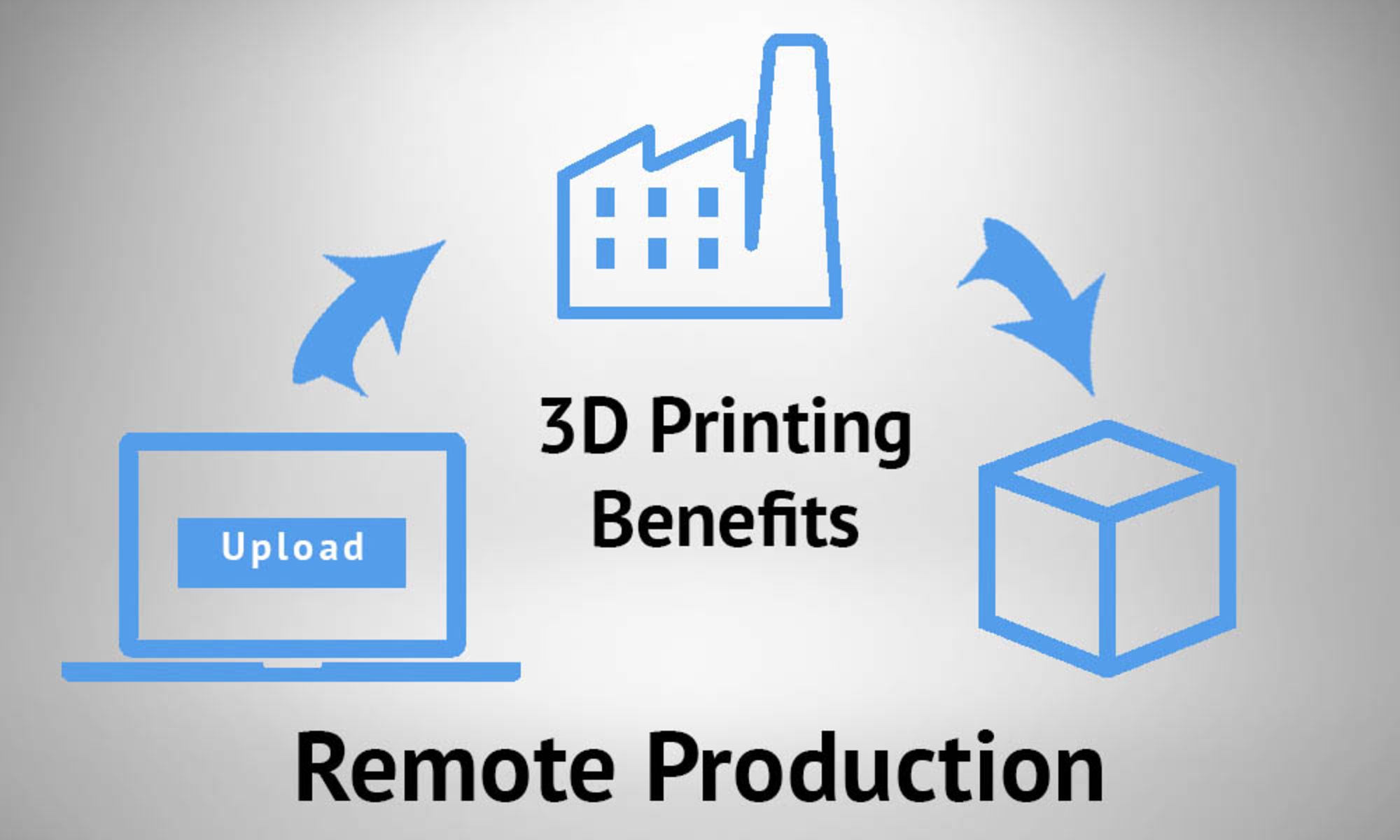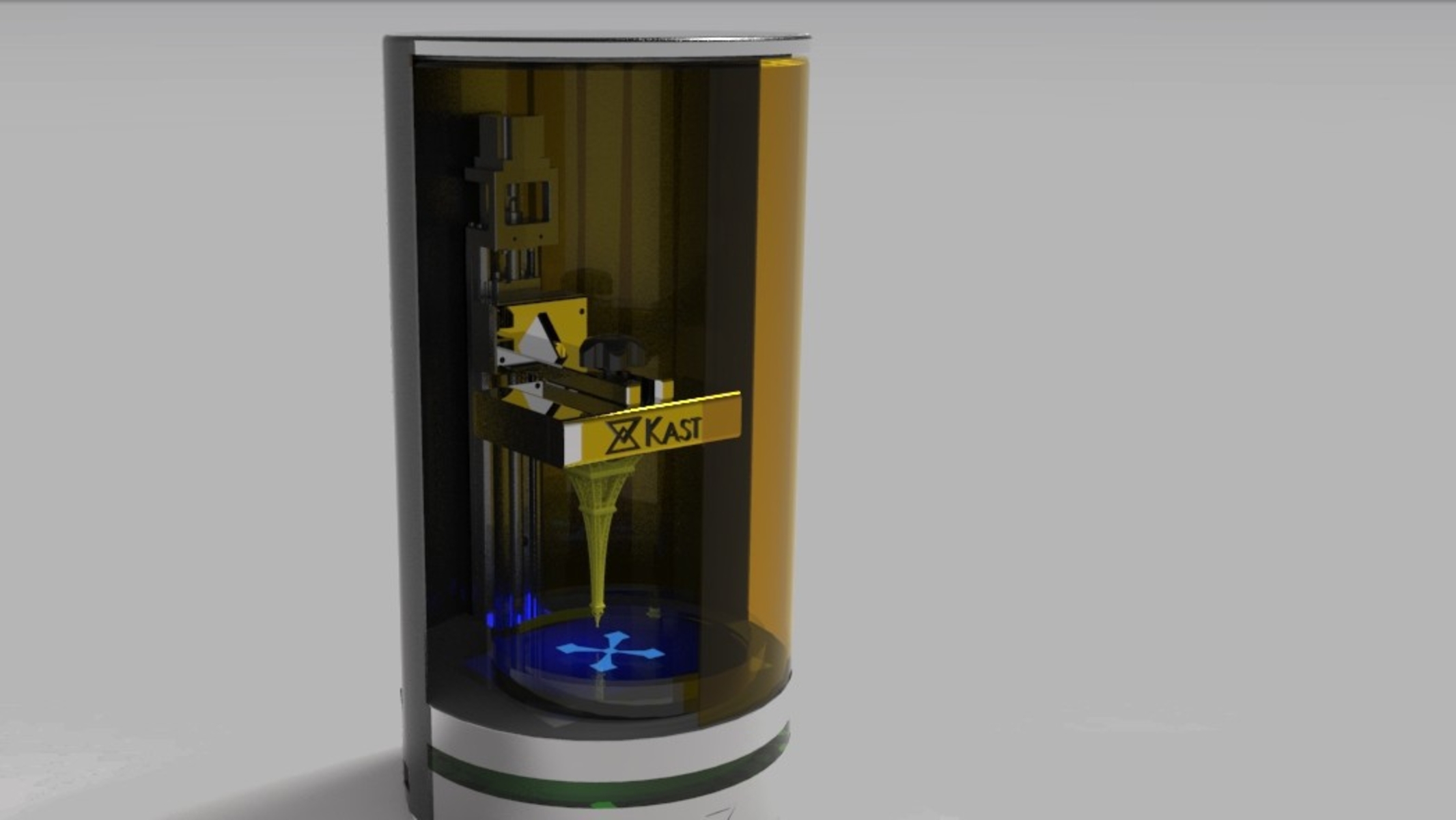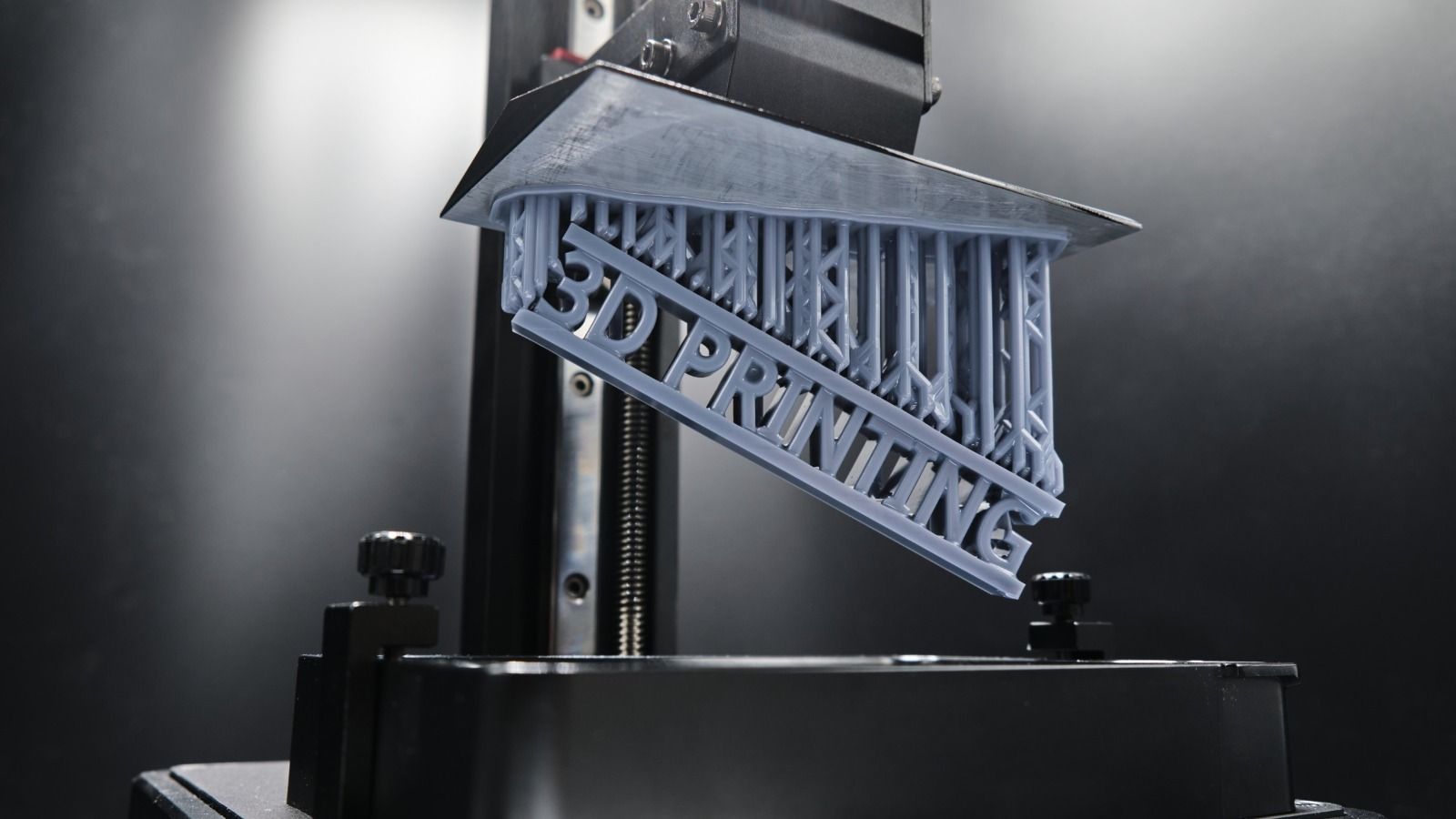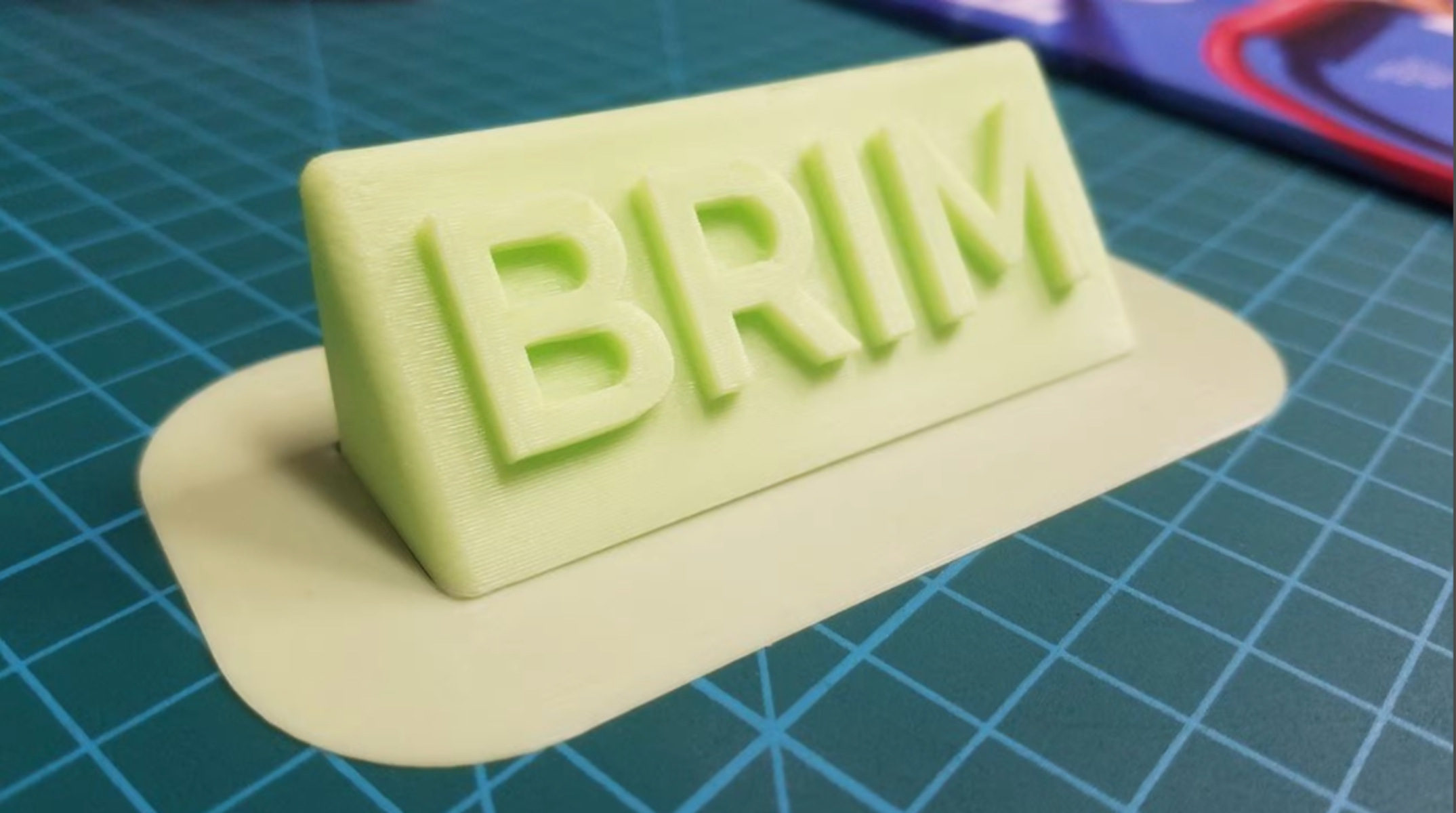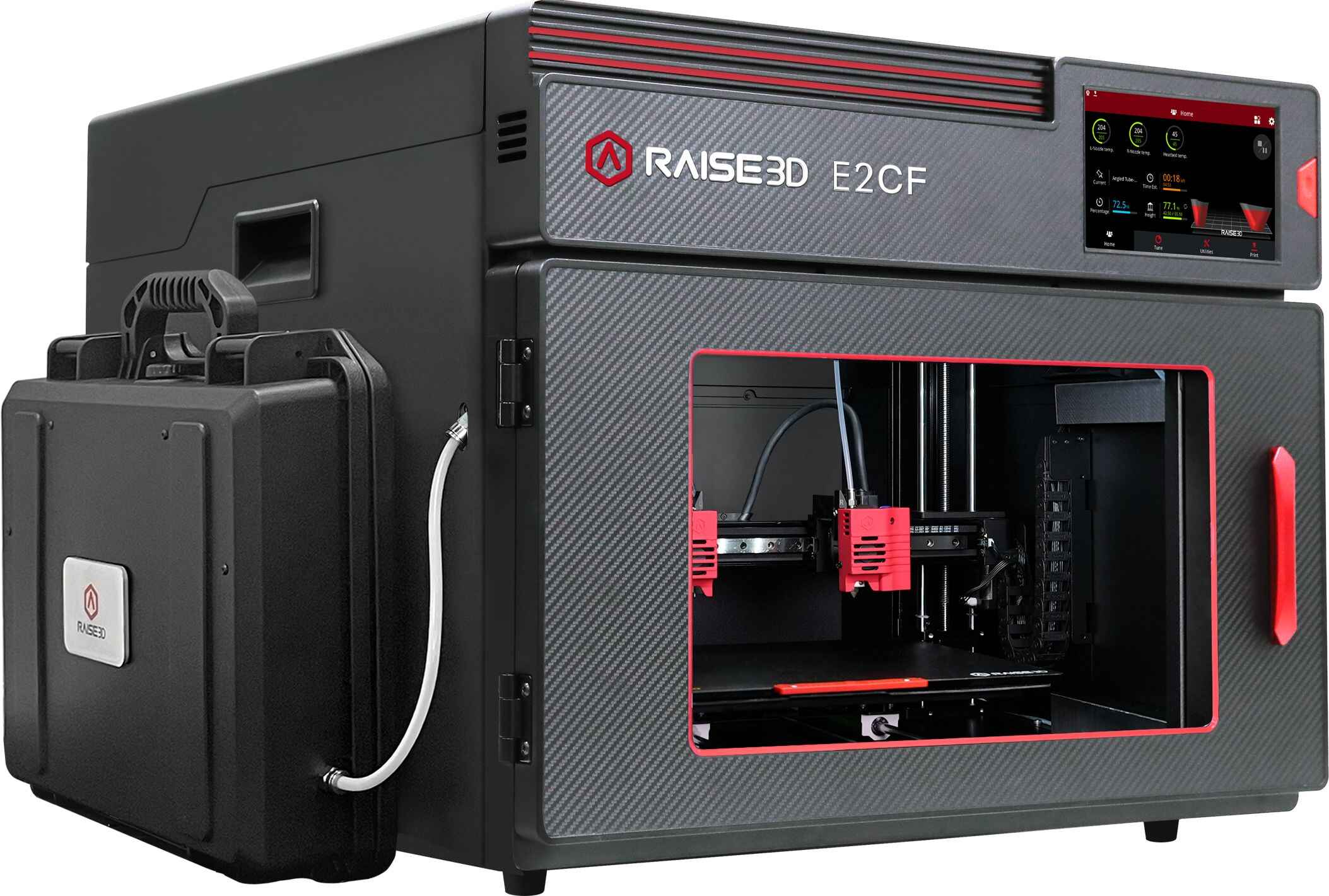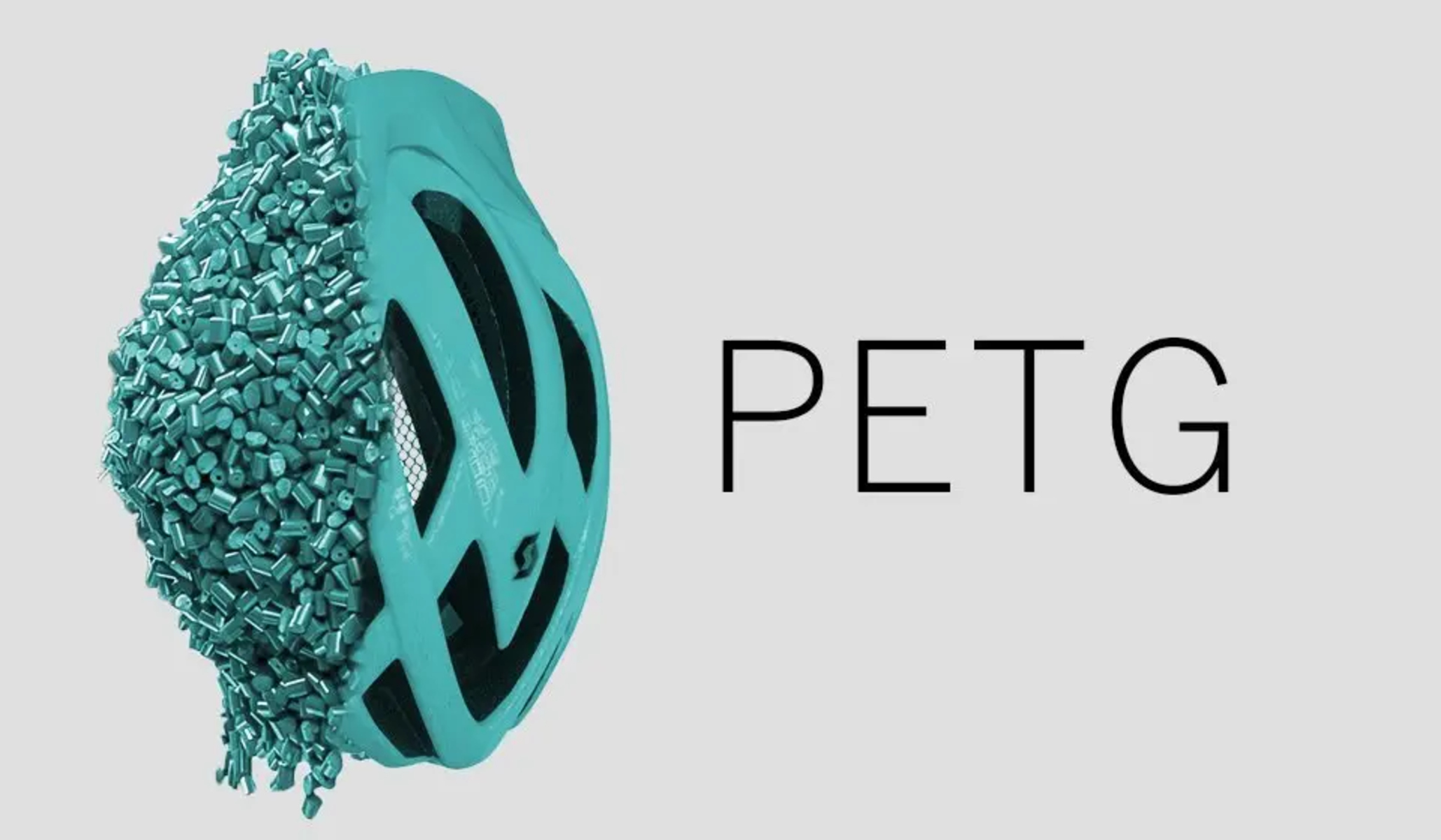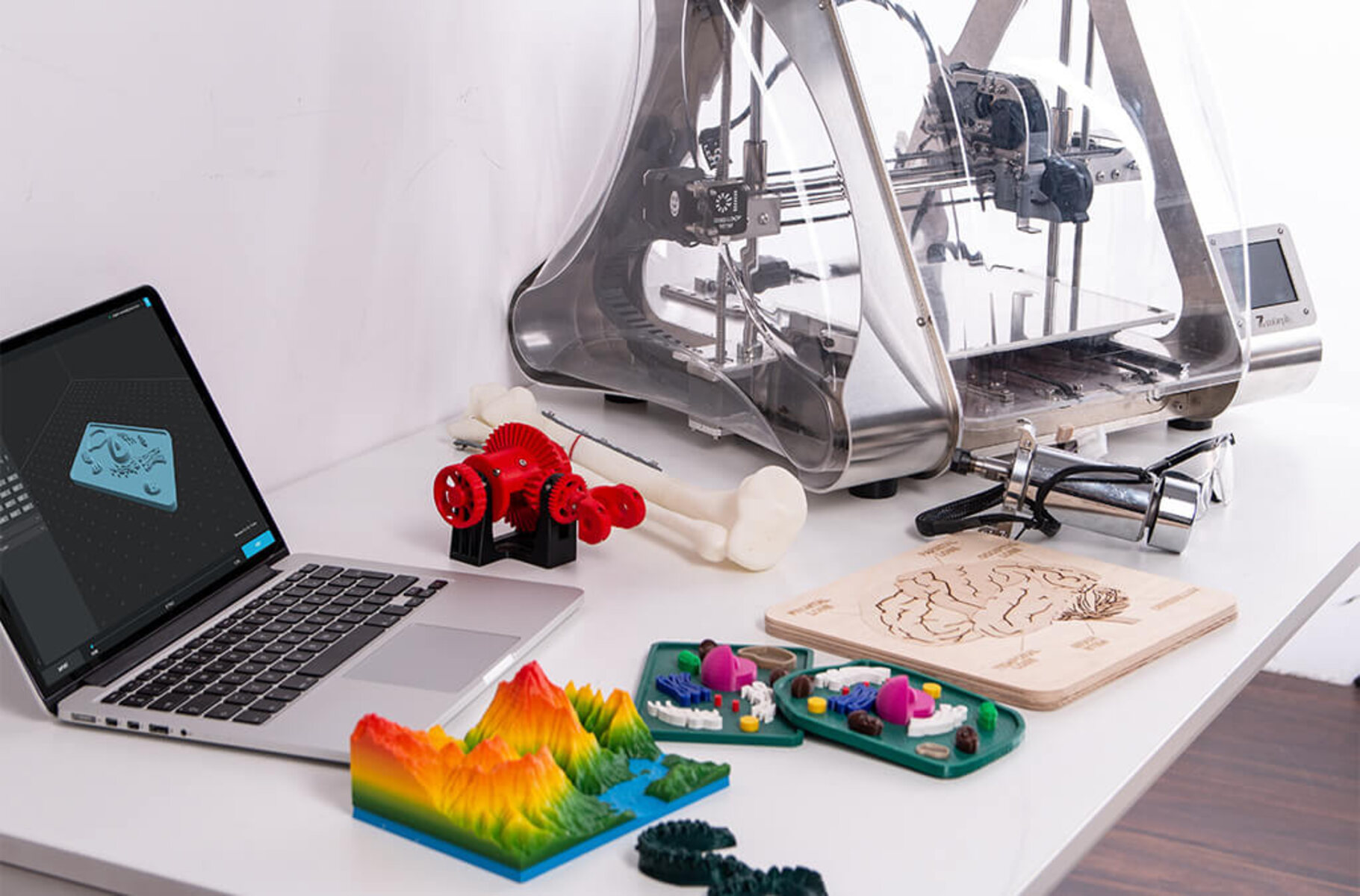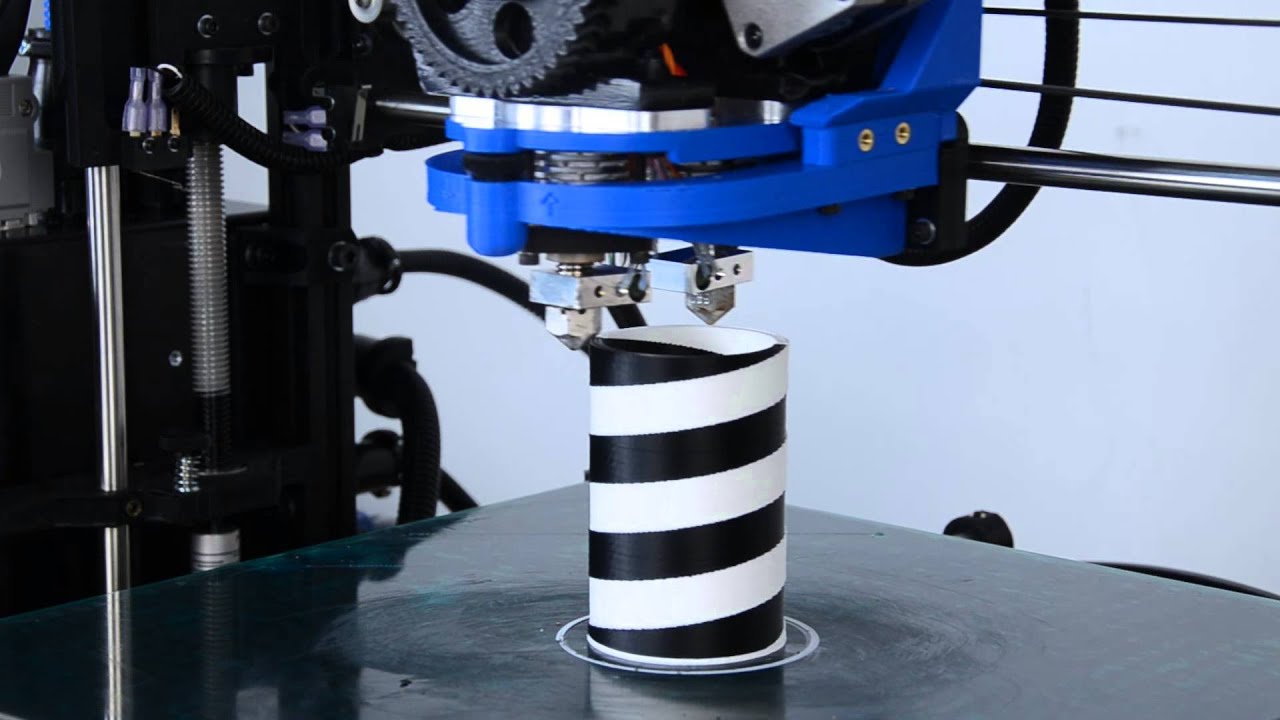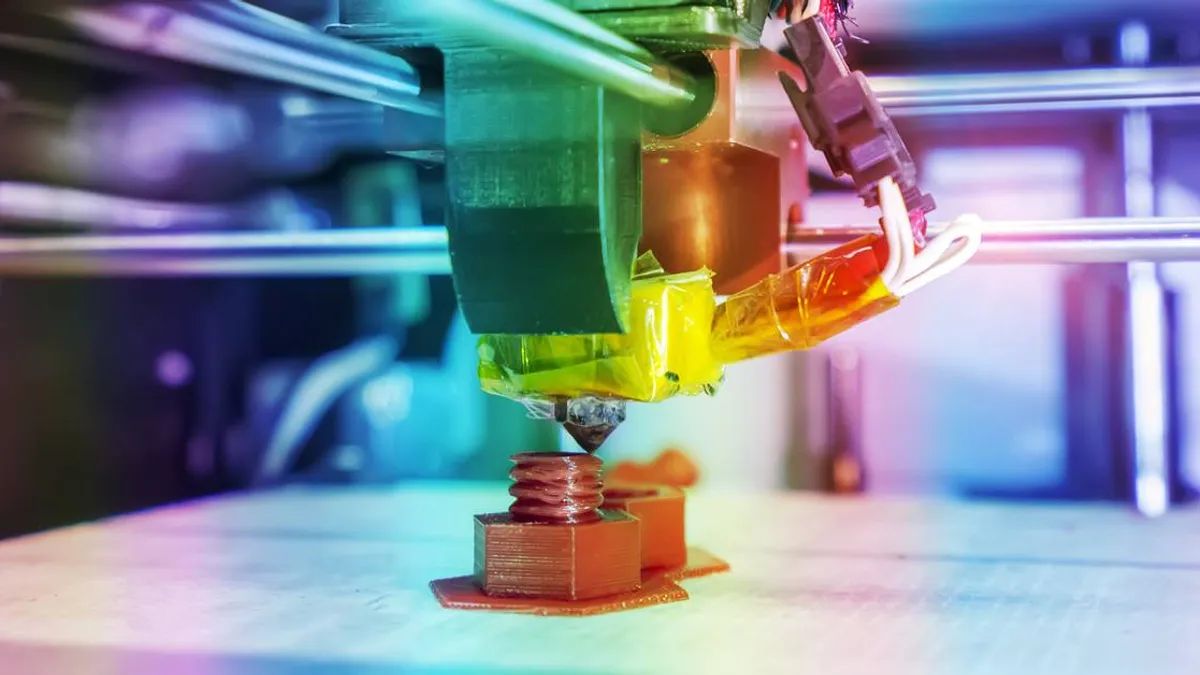Introduction
3D printing, also known as additive manufacturing, is revolutionizing the way we produce and create objects. This innovative technology allows for the creation of three-dimensional objects by building them layer by layer, using a digital design as a blueprint. What started as a niche process has now become increasingly accessible and affordable, opening up a world of possibilities across various industries.
With its ability to transform virtual designs into physical products, 3D printing has gained traction in fields such as manufacturing, engineering, healthcare, and even education. Its numerous benefits have contributed to its growing popularity and application.
In this article, we will explore the advantages of 3D printing and delve into how it has influenced and transformed different sectors. From improved efficiency and cost savings to reduced waste and environmental impact, this technology has the potential to revolutionize traditional manufacturing processes.
So, let’s delve into the fascinating world of 3D printing, where imagination meets innovation!
Improved Efficiency and Cost Savings
One of the significant benefits of 3D printing is its potential to improve efficiency and save costs in the manufacturing process. Traditional manufacturing often involves complex supply chains and high production costs. With 3D printing, however, companies can streamline production by eliminating the need for multiple production steps and reducing material waste.
By using 3D printing technology, manufacturers can create components and products directly from digital designs. This eliminates the need for costly tooling and molds, which are typically required in traditional manufacturing methods. With 3D printing, companies can produce items on-demand and customize them according to specific requirements, reducing inventory costs.
Additionally, 3D printing allows for the consolidation of multiple parts into a single component. By printing complex designs in one piece, companies can reduce assembly time and simplify the production process. This consolidation also eliminates the need for additional joining or connecting parts, further reducing costs and enhancing overall efficiency.
Moreover, with 3D printing, manufacturers can iterate and refine designs quickly and at a lower cost. Traditional prototyping methods often involve lengthy lead times and high expenses. In contrast, 3D printing enables rapid prototyping, allowing companies to test and modify designs more efficiently. This accelerated development process can lead to faster time-to-market, giving businesses a competitive edge.
The improved efficiency and cost savings of 3D printing positively impact various industries. For example, in the automotive industry, companies can produce lightweight components with intricate geometries that were previously challenging to manufacture. This reduces the overall weight of vehicles, leading to increased fuel efficiency and ultimately, cost savings for consumers.
In summary, 3D printing offers improved efficiency and substantial cost savings by eliminating the need for extensive tooling, reducing material waste, enabling rapid prototyping, and simplifying the production process. These advantages not only benefit businesses but also result in greater innovation, lower costs for consumers, and a more sustainable manufacturing ecosystem.
Customization and Personalization
One of the remarkable advantages of 3D printing is its ability to enable customization and personalization in manufacturing. Unlike traditional mass production methods that produce identical products, 3D printing allows for the creation of unique and tailored items based on individual needs and preferences.
With 3D printing, manufacturers can easily modify digital designs to suit specific requirements. This means that customers have the opportunity to personalize products, whether it’s a customized phone case with their name engraved or a personalized piece of jewelry with a unique design. This customization not only enhances the overall user experience but also creates a stronger emotional connection between the customer and the product.
Furthermore, 3D printing enables the production of products with complex geometries and intricate details that would be challenging or impossible to achieve with traditional manufacturing methods. This opens up a world of creative possibilities, allowing designers and artists to explore innovative and unique designs that were once limited by the constraints of traditional manufacturing.
In industries such as healthcare, 3D printing has revolutionized the field of prosthetics. Each individual has unique needs when it comes to prosthetic limbs or orthopedic devices. With traditional manufacturing, creating customized prosthetics can be time-consuming and expensive. However, 3D printing allows for the production of personalized prosthetics by leveraging patient-specific data and creating a perfect fit for each individual, leading to improved comfort and functionality.
Moreover, 3D printing has opened doors to the world of personalized medicine. Scientists and researchers can use 3D printing technology to create customized medical devices, implants, and even organs. This tailored approach to healthcare has the potential to improve treatment outcomes and patient satisfaction.
In summary, 3D printing offers unparalleled opportunities for customization and personalization in manufacturing. Whether it’s creating unique products that reflect individual preferences or producing personalized medical devices, this technology empowers individuals and businesses to bring their creative visions to life.
Faster Prototyping and Product Development
3D printing has significantly shortened the prototyping and product development phases, leading to faster innovation and time-to-market for businesses. In traditional manufacturing, the prototyping process often involves lengthy lead times and expensive tooling costs. However, with 3D printing technology, companies can quickly turn digital designs into physical prototypes, reducing both time and expense.
By using 3D printers, designers and engineers can create functional prototypes within hours or days, compared to weeks or months with conventional methods. This rapid prototyping allows for iterative design improvements and facilitates faster testing and validation of product concepts. Manufacturers can quickly identify and address design flaws or necessary modifications, ensuring a more efficient product development cycle.
Furthermore, the ability to 3D print prototypes in-house provides companies with greater control and flexibility over the development process. They no longer have to rely on external prototyping services, which can be time-consuming and costly. This independence allows for more frequent prototypes and iterations, enabling businesses to refine their designs and bring products to market faster.
Additionally, 3D printing technology facilitates collaboration between different teams and departments involved in product development. Digital designs can be easily shared and modified, allowing for real-time feedback and input from various stakeholders. This streamlined communication and collaboration process reduces the chances of miscommunication or misunderstandings, further speeding up the development cycle.
Moreover, 3D printing enables the creation of functional prototypes that closely resemble the final product in terms of performance and aesthetics. This ability to produce prototypes with high accuracy and intricate details allows for better evaluation and testing of product functionality and consumer appeal. Companies can gather valuable feedback from potential customers or end-users early in the development process, allowing for necessary adjustments before mass production.
In summary, 3D printing has revolutionized the prototyping and product development phases by enabling rapid and cost-effective production of prototypes. This technology allows businesses to iterate designs quickly, test functionalities, and gather feedback, resulting in faster innovation and reduced time-to-market for new products.
Reduced Waste and Environmental Impact
3D printing offers a more sustainable approach to manufacturing by significantly reducing waste and minimizing its environmental impact. Traditional manufacturing methods often result in a substantial amount of material waste, as excess materials are typically discarded during the production process. In contrast, 3D printing allows for a more efficient use of materials, reducing waste generation.
With additive manufacturing, objects are created layer by layer, utilizing only the necessary amount of material to build the desired structure. This targeted approach eliminates the need for excess materials and reduces the overall consumption of raw materials. As a result, 3D printing can lead to significant waste reduction, making it a greener alternative to conventional manufacturing.
Furthermore, 3D printing enables the use of recycled materials in the production process. Many 3D printers can utilize recycled plastics or other materials, contributing to a more circular and sustainable economy. By incorporating recycled materials, companies can reduce the demand for virgin resources, decrease energy consumption, and lessen their environmental impact.
Additionally, 3D printing opens up opportunities for design optimization that can further reduce material waste. Through the use of computer-aided design (CAD) software, designers can create structures with optimized geometries, using less material while maintaining strength and functionality. This design freedom allows for the creation of lightweight and efficient objects, reducing material consumption and energy requirements during production.
Moreover, 3D printing supports local and decentralized manufacturing, which can significantly diminish the carbon footprint associated with transportation and shipping. By producing goods on-site or closer to the point of consumption, companies can reduce the need for long-distance shipping, thereby minimizing greenhouse gas emissions.
In summary, 3D printing offers a more sustainable approach to manufacturing by reducing waste, utilizing recycled materials, optimizing designs, and promoting local production. As companies embrace this technology, they contribute to a greener and more environmentally conscious manufacturing industry.
Accessibility to Complex Designs and Geometries
3D printing has revolutionized the production of objects with complex designs and geometries that were previously difficult or impossible to manufacture using traditional methods. This technology opens up a world of possibilities, allowing designers and engineers to create intricate and highly detailed objects with ease.
With traditional manufacturing techniques, certain designs and geometries can be challenging to achieve due to limitations in tooling or machining capabilities. However, with 3D printing, designers have the freedom to create complex structures, including intricate lattice patterns, organic shapes, and geometries with internal cavities.
One of the key advantages of 3D printing is its ability to construct objects layer by layer, allowing for intricate details and complex geometries to be realized. This technology enables the production of geometries with undercuts, overhangs, and internal features that would be difficult or impossible to achieve using traditional subtractive manufacturing methods.
Additionally, additive manufacturing allows for the creation of objects with varying material properties within a single print. This capability opens doors to the production of advanced structures, such as lightweight and strong components with internal support structures, or objects with integrated functionalities like embedded electronics or sensors.
The accessibility to complex designs and geometries made possible by 3D printing has significant implications across various industries. In architecture and construction, for example, 3D printing enables the creation of intricate and customized building components, allowing for unique and innovative designs.
In the medical field, 3D printing is transforming the production of customized implants, prosthetics, and patient-specific models for surgical planning. Surgeons can now perform complex procedures with greater precision, thanks to accurate 3D printed models that replicate the patient’s anatomy.
Furthermore, industries such as aerospace and automotive can take advantage of 3D printing to produce lightweight structures with complex internal geometries. These designs improve fuel efficiency in aircraft and automobiles while maintaining structural integrity, leading to reduced weight, increased performance, and cost savings.
In summary, 3D printing breaks the barriers of traditional manufacturing methods by providing accessibility to complex designs and geometries. From customized architectural components to advanced medical implants and aerospace structures, this technology empowers designers and engineers to push the boundaries of what is possible, leading to innovations and advancements across various industries.
On-demand Production and Reduced Inventory
One of the major benefits of 3D printing is its ability to enable on-demand production, reducing the need for large inventories and increasing operational efficiency for businesses. Traditional manufacturing often requires companies to produce goods in bulk and maintain extensive inventories to meet customer demand. However, with 3D printing, companies can produce items as needed, eliminating the need for excessive stockpiling and reducing inventory costs.
By adopting 3D printing technology, companies can manufacture products on-demand, responding quickly to customer orders and market demands. This flexibility allows businesses to reduce lead times and meet customer expectations more effectively. Instead of waiting for products to be manufactured and shipped from distant locations, customers can receive customized or personalized items faster.
In addition to the advantages of on-demand production, 3D printing also offers the opportunity for on-site or distributed manufacturing. With the compact size and accessibility of 3D printers, companies can set up production facilities closer to the point of consumption. This localized approach reduces transportation costs and environmental impact associated with long-distance shipping.
3D printing also minimizes the risk of overproduction and wastage. Since items can be produced in small quantities or even as single units, companies can match production with demand more accurately, avoiding excess inventory. This reduction in surplus goods not only saves storage space but also prevents unnecessary wastage of resources.
Furthermore, 3D printing allows for easy modifications and updates to product designs. Rather than discarding obsolete inventory due to design or specification changes, companies can simply update the digital design files and produce the updated version using 3D printing technology. This agility in design iterations and updates reduces inventory obsolescence and ensures that customers receive the most up-to-date products.
Moreover, 3D printing enables just-in-time manufacturing, which minimizes the risk of stockouts and reduces carrying costs. Companies can optimize their supply chains by producing items as close to the time of consumption as possible, ensuring a continuous flow of inventory without the need for excessive stockpiling.
In summary, 3D printing facilitates on-demand production, reducing the need for large inventories and enabling businesses to meet customer demand more efficiently. This technology provides companies with the flexibility to produce items as needed, reduce wastage, and optimize their supply chains, resulting in cost savings and improved operational efficiency.
Advancements in the Medical and Healthcare Industry
The medical and healthcare industry has witnessed significant advancements and breakthroughs through the implementation of 3D printing technology. From customized implants to patient-specific surgical models, 3D printing is transforming the way medical professionals approach diagnosis, treatment, and patient care.
One of the key applications of 3D printing in the medical field is the production of customized implants and prosthetics. Traditional implant manufacturing methods often involve lengthy lead times and limited customization options. However, with 3D printing, implants can be tailor-made to fit a patient’s specific anatomy, improving surgical outcomes and patient comfort. These patient-specific implants can be designed and created based on medical imaging data, ensuring a perfect fit and reducing the risk of complications.
Prosthetics have also seen significant advancements with the integration of 3D printing technology. A conventional prosthetic limb can be expensive and time-consuming to produce. However, 3D printing allows for the production of low-cost, customized prosthetics that perfectly match the individual’s needs and preferences. This not only improves the functionality of the prosthetic but also enhances the quality of life for the user.
Moreover, 3D printing enables the creation of accurate patient-specific surgical models, allowing surgeons to plan and practice complex procedures before stepping into the operating room. These models, created from medical imaging data, provide surgeons with a hands-on understanding of the patient’s unique anatomy, aiding in the development of precise surgical strategies and reducing surgery time and risks.
Additionally, 3D printing plays a crucial role in the manufacturing of medical instruments and devices. It allows for the production of instruments that are customized to fit the surgeon’s hand, improving ergonomics and precision during surgeries. 3D printing has also made it possible to create intricate and complex medical devices, such as hearing aids, dental aligners, and drug delivery systems, which are personalized to each patient’s needs.
Furthermore, 3D bioprinting, a specialized branch of 3D printing, has the potential to revolutionize organ transplantation. Although still in its early stages of development, researchers are exploring the possibility of printing functional human organs using living cells. This could address the growing demand for organ transplants and eliminate the need for lengthy waiting lists.
In summary, the medical and healthcare industry is being transformed by the advancements in 3D printing technology. From customized implants and prosthetics to patient-specific surgical models and the potential for organ transplantation, 3D printing offers immense opportunities to improve patient care, enhance surgical outcomes, and drive innovation in the medical field.
Education and Learning Opportunities
3D printing technology has opened up new avenues for education and learning, providing students and educators with unique opportunities to engage in hands-on experiences and foster creativity. The integration of 3D printing in educational settings has the potential to transform the way concepts are taught, empowering students to explore, design, and prototype their ideas.
One of the key benefits of 3D printing in education is its ability to bring abstract concepts to life. Students can use 3D modeling software to create digital designs and then turn them into physical objects, allowing them to visualize and interact with complex ideas more tangibly. This hands-on approach fosters a deeper understanding of concepts and encourages critical thinking and problem-solving skills.
3D printing also paves the way for cross-curricular integration, combining science, technology, engineering, arts, and mathematics (STEAM) disciplines. Students can apply their knowledge from various subjects to create multidisciplinary projects. For example, students can design and print architectural models, prototypes of mechanical systems, or even create art installations using 3D printers.
Furthermore, 3D printing enables educators to offer personalized and adaptive learning experiences. Teachers can tailor lessons and assignments to individual student needs, allowing for differentiated instruction. Students can work at their own pace, refining their designs and prototypes, and learn from both their successes and failures. This iterative process fosters resilience, creativity, and a deeper understanding of the subject matter.
3D printing technology also promotes collaboration and teamwork among students. They can work together in design and manufacturing projects, fostering communication, problem-solving, and project management skills. By collaborating on 3D printing projects, students learn to exchange ideas, negotiate, and make collective decisions, preparing them for future collaborative work environments.
Additionally, 3D printing encourages entrepreneurial thinking and innovation. Students can take their ideas from conception to creation, understanding the entire product development cycle. This hands-on experience in prototyping and manufacturing can spark creativity and entrepreneurial spirit, encouraging students to explore entrepreneurship and innovative solutions to real-world problems.
Moreover, 3D printing provides access to a vast online community of makers, educators, and enthusiasts. Students can join online platforms and communities where they can share their designs, get feedback, and collaborate with others, expanding their knowledge and learning from a global network of individuals passionate about 3D printing.
In summary, 3D printing offers unique opportunities for education and learning, providing students with hands-on experiences, interdisciplinary integration, personalized learning, collaboration, and fostering entrepreneurial thinking. By incorporating 3D printing technology in educational settings, educators can inspire creativity, enhance critical thinking skills, and prepare students for the challenges of the future.
Exploration and Innovation in Aerospace and Automotive Industries
The aerospace and automotive industries have embraced 3D printing technology, driving exploration and fostering innovation in these sectors. By leveraging the capabilities of 3D printing, these industries have been able to push the boundaries of design, enhance performance, and create new opportunities for advancement.
In the aerospace industry, 3D printing has revolutionized the manufacturing of complex components and lightweight structures. By utilizing 3D printing technology, aerospace companies can produce intricate and optimized designs that were once challenging or impossible to achieve using traditional manufacturing methods.
With 3D printing, intricate geometries can be created, allowing for more efficient use of materials and increased strength-to-weight ratios. This enables the production of lighter components, reducing the overall weight of aircraft and spacecraft. A decreased weight contributes to improved fuel efficiency, increased load capacity, and enhanced performance.
3D printing also allows for the production of components with integrated functionality. Instead of assembling multiple parts, 3D printing enables the creation of parts with embedded sensors, cooling channels, or complex internal structures, improving performance and reducing the risk of component failures.
Moreover, 3D printing facilitates rapid prototyping and iterative design in the aerospace industry. Designers and engineers can create prototypes quickly and efficiently, allowing for faster testing and validation. This accelerated iteration process enables refinement and optimization of designs, leading to improved efficiency, cost savings, and faster time-to-market.
In the automotive industry, 3D printing has similarly sparked innovation and transformed manufacturing processes. With 3D printing technology, automotive companies can produce complex designs and geometries that enhance vehicle performance and customization options.
One of the significant advantages of 3D printing in the automotive industry is the ability to create lightweight components without compromising strength. By utilizing advanced materials and intricate designs, 3D printing enables the production of parts that are not only lighter but also meet strict performance and safety standards.
Furthermore, 3D printing offers the opportunity for customization and personalization in the automotive industry. From customized car interiors to personalized accessories, 3D printing allows for the creation of unique and tailored automotive components, enhancing the overall driving experience for consumers.
Additionally, 3D printing enables faster production of prototypes and concept cars, accelerating the innovation process in automotive design. This results in reduced development time, more efficient collaboration between design teams, and a greater ability to experiment with new concepts and technologies.
By embracing 3D printing, the aerospace and automotive industries are at the forefront of exploring new design possibilities, improving performance, and fostering innovation. As this technology continues to evolve, it is expected to revolutionize these industries even further, enabling new advances and pushing the boundaries of what is possible.
Conclusion
3D printing technology has brought about a myriad of benefits and advancements across various industries. From improved efficiency and cost savings to customization and personalization, this transformative technology has revolutionized the way we manufacture, create, and innovate.
Through 3D printing, companies can enhance operational efficiency by reducing waste, streamlining production processes, and minimizing the need for excessive inventory. The ability to create on-demand, customized products has not only improved customer satisfaction but has also opened new opportunities for businesses to meet diverse and evolving market demands.
Furthermore, 3D printing has enabled the exploration of complex designs and geometries, pushing the boundaries of creativity and innovation. Industries such as aerospace and automotive have leveraged this technology to produce lightweight components, optimize designs, and foster advancements in performance and fuel efficiency.
In the medical and healthcare industry, 3D printing has revolutionized patient care, allowing for personalized implants, customized prosthetics, and patient-specific surgical models. This technology has the potential to transform the future of medicine with the prospect of 3D bioprinting and the creation of functional human organs.
Education and learning have also been positively impacted by 3D printing, providing students with hands-on experiences, fostering interdisciplinary learning, and promoting creativity, collaboration, and entrepreneurial thinking.
As 3D printing technology continues to mature, its applications will only expand, opening up new possibilities for exploration, innovation, and sustainable manufacturing. From reducing waste and environmental impact to facilitating faster prototyping and product development, the advantages of 3D printing are vast and far-reaching.
In conclusion, 3D printing has transformed traditional manufacturing approaches, offering improved efficiency, customization, and innovation across various industries. With its limitless potential, 3D printing is reshaping the way we create and manufacture, bringing us closer to a future where possibilities are only limited by our imagination.







